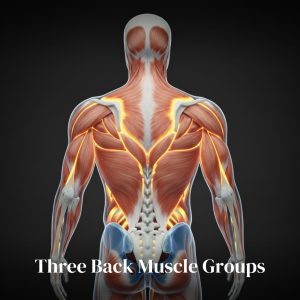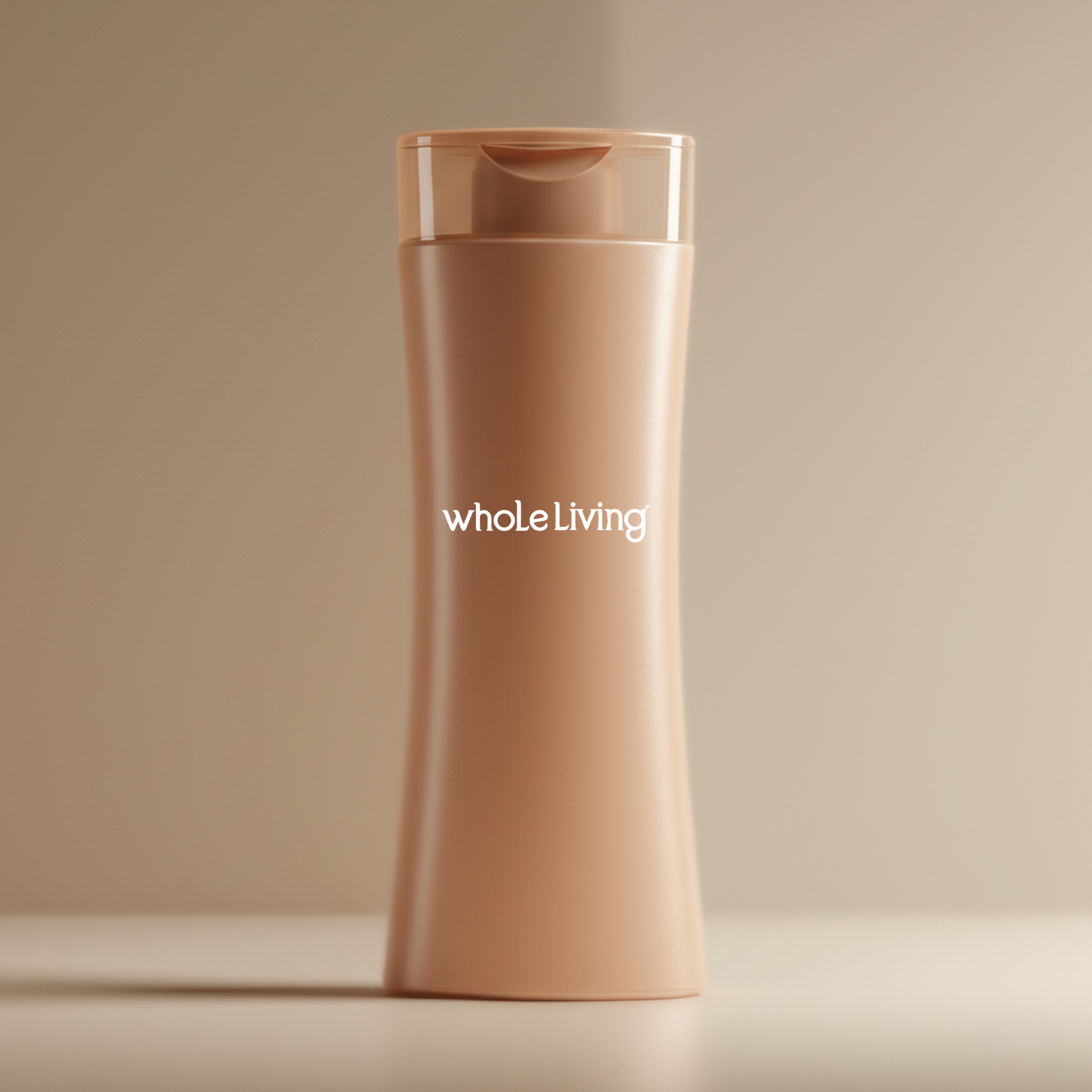In This Article
Your back muscle system is more than structure. It is the quiet foundation that helps you stand tall, breathe deeply, and move with ease. Every time you reach, bend, or twist, the muscles of the back coordinate in balance. They guide you through life’s simplest actions and support your posture when stillness is required.
Strength is not only about lifting heavy or pushing harder. True strength feels steady, balanced, and sustainable. When your back is supported by strong muscles, your shoulders, spine, and legs all share the load more evenly. This creates harmony in your body and prevents unnecessary pain or strain. It also ensures your posture stays aligned, allowing you to move through life with more confidence and less discomfort.
In this guide, you will explore back muscle exercises designed for stability, balance, and everyday strength. These movements are gentle, thoughtful, and empowering. You will learn about the anatomy in simple words, connect with important muscle groups like the latissimus dorsi and trapezius, and see how they all work together. Most importantly, you will discover how to nurture your back in a way that feels supportive, not overwhelming.
You do not need a gym or fancy equipment. All you need is awareness, time, and willingness to show up for yourself. As you begin, remember that building strength is a process. Each step counts, and your back is ready to support you on the journey.
Back Anatomy Made Simple

The back can seem complicated when you look at it in textbooks. There are layers of muscles, nerves, and bones working together. But in truth, the back is simply a powerful system that balances your body, stabilizes your movements, and protects your spine. Each part of this structure works together, creating harmony in every movement you make.
The main muscles of the back are often divided into three groups: superficial, intermediate, and deep. The superficial muscles include the trapezius, latissimus dorsi, rhomboid major, and rhomboid minor. These are the muscles you notice when you move your shoulders or stretch your arms. They help with posture, arm movements, and the positioning of your shoulder blades. They connect the spine to the upper limb, ensuring coordinated and efficient movement.
Beneath these lie the intermediate back muscles, such as the serratus posterior superior and serratus posterior inferior. These muscles connect closely to the ribs, aiding in breathing and gentle movements of the chest. Though smaller, they provide essential support and coordinate with the intercostal muscles during respiration. They remind us that breathing itself is supported by the back’s structure.
Finally, the intrinsic back muscles—or deep back muscles—are located closest to the spine. These include the erector spinae muscles and other stabilizers. They connect to the vertebrae through spinous processes and transverse processes, creating stability along the vertebral column. Together, they support posture, balance, and spinal alignment in every moment. Without them, even standing tall would feel nearly impossible.
Why Strengthening Back Muscles Matters

Your back muscles do far more than create movement. They protect your vertebral column, align your posture, and prevent pain from spreading into the neck, shoulders, or legs. When these muscles are strong, the entire body functions more gracefully and with less effort. They ensure that each step, bend, or twist you take feels supported and steady.
A weak back muscle group is a common cause of discomfort. It can lead to muscle weakness, tightness, or recurring back pain. Over time, this weakness places stress on the spinal nerves and vertebrae, creating issues that may require support from a healthcare provider or physical therapist. Preventing these problems starts with small daily steps toward strength and balance. Even gentle exercise can reduce the risk of long-term strain.
Strengthening the muscles of the back also improves your posture. It reduces slouching, aligns your shoulders, and steadies your neck. This balance makes everyday movements—walking, sitting, lifting—feel lighter and more natural. It also lowers the risk of low back pain, which so many people struggle with today. Good posture also improves breathing and energy levels.
When your back muscles support you well, even your breathing improves. A strong back creates space in your chest, allowing your ribs to expand with less effort. With strength and balance, your back becomes not only your support system but also a pathway to greater energy and well-being. Each breath becomes a reminder of the power within.
Understanding the Three Groups of Back Muscles

The muscles of the back are beautifully organized into three groups. These three groups create harmony, each layer working in quiet cooperation to help you move and stay balanced. The superficial, intrinsic, and intermediate back muscles all have unique roles, yet they share one goal: to stabilize and guide your body.
The superficial back muscles sit closer to the surface and connect your shoulders, scapula, and arms. They are involved in posture, shoulder movement, and pulling actions. The intrinsic back muscles, found deep along the vertebral column, provide stability and keep your spine aligned. Without their strength, the body would lack balance and endurance. Finally, the intermediate muscles, like the serratus posterior muscles, bridge the surface and deeper layers, aiding in breathing and coordinating chest expansion.
These three groups are not isolated systems. They interact constantly, transferring force from one area to another, ensuring smooth coordination. For example, when you lift your arms, the superficial muscles guide the movement, the intrinsic muscles stabilize the vertebrae, and the intermediate muscles maintain breathing rhythm. Each group has its own importance, but together, they create balance.
By learning about the three groups, you gain a deeper appreciation for how the back truly works. They remind us that strength is layered, and wellness comes from every part working together. Let’s look closer at the roles of each group, starting with the superficial back muscles.
The Superficial Back Muscles and Everyday Movement
The superficial back muscles are the ones you can see and feel more easily. They include the trapezius, latissimus dorsi, levator scapulae, rhomboid major, and rhomboid minor. These muscles originate in different parts of the spine, scapular spine, and medial border of the scapula, attaching to the shoulders and upper limb. They are major muscles that contribute to how you move through daily life.
The trapezius is a major muscle that spans from the external occipital protuberance down to the thoracic spine. It helps lift your shoulders, move your neck, and stabilize your scapula superiorly. The latissimus dorsi is another major muscle, extending from the iliac crest and lower thoracic vertebrae to the upper arm. It plays a key role in pulling movements and posture. The levator scapulae, rhomboid muscles, and other superficial back muscles coordinate to stabilize the shoulder blades and guide movement of the arms.
These muscles work as a team in daily actions like carrying groceries, reaching overhead, or adjusting your posture while seated. When they are strong, they prevent back pain and reduce the risk of injury. When they are weak, posture suffers, and the shoulders begin to slump. This shows how essential these muscles are to both strength and balance.
By strengthening the superficial back muscles, you create a solid foundation for your upper body. They keep your shoulders aligned, support your arms, and reduce the strain on your neck. They are not only for athletes—they are essential for anyone who wants to move with ease and confidence.
Deep and Intrinsic Muscles: Guardians of Your Posture
The intrinsic back muscles, often called the deep back muscles, are found closest to the spine. They include the erector spinae, multifidus, and other stabilizers that line the vertebral column. These muscles are not as visible, but they are some of the most important for posture, balance, and spinal health.
The erector spinae muscles run along the length of the spine, from the lumbar level up to the superior vertebral levels. They attach to spinous processes, transverse processes, and even the iliac crest. Their role is to extend the spine, helping you stand upright and resist slouching. Without these, maintaining posture would be exhausting, and low back pain would be far more common.
These muscles also protect the spinal nerves and support breathing by keeping the chest open. Their fibers coordinate with the deep cervical muscles to hold your neck steady and aligned. By engaging daily, the intrinsic muscles help prevent back pain and muscle weakness that can develop from long hours of sitting. Strengthening the intrinsic back muscles through exercises like bird-dogs, bridges, or gentle extensions creates lasting support for the vertebral column. These are your posture guardians, making sure you stay upright, balanced, and pain-free throughout your life.
Intermediate Muscles and Their Quiet Power
The intermediate back muscles, though smaller and less known, play a vital role in breathing and posture. They include the serratus posterior superior and serratus posterior inferior. Together, they form the serratus posterior muscles, connecting closely with the ribs and working alongside the intercostal muscles. They may not be as visible, but their role is deeply important.
The serratus posterior superior helps lift the ribs during inhalation, supporting the chest as it expands. The serratus posterior inferior, in contrast, anchors the ribs during exhalation, ensuring steady breathing rhythm. These muscles also coordinate with the long thoracic nerve and serratus anterior to stabilize the rib cage. Their fibers are positioned carefully along the posterior aspect of the spine, creating balance in every breath.
When these intermediate muscles are weak, breathing can feel shallow, and posture may suffer. Their work is subtle but necessary for maintaining chest mobility and overall spinal stability. Even though they are not major movers like the latissimus dorsi or trapezius, they create harmony between breathing and posture.
By including gentle breathing exercises, stretches, and mindful posture awareness, you can strengthen these intermediate muscles. They remind us that even the smallest, quietest muscles support the body in meaningful ways. Their quiet power ensures that both strength and breath remain balanced.
READ ALSO: 15-Minute Simple Workout Routine
Everyday Causes of Back Pain and Muscle Weakness

Back pain is one of the most common issues people face, and it often stems from simple daily habits. Long hours of sitting at desks, lack of physical activity, or poor posture are frequent triggers. These habits weaken the muscles of the back, leading to discomfort that can spread to the neck, shoulders, and even the legs. Here are some everyday causes of back pain and muscle weakness:
- Prolonged Sitting: Sitting for too many hours without movement weakens superficial and intrinsic back muscles.
- Poor Posture: Slouching strains the vertebral column and compresses spinal nerves.
- Lack of Physical Activity: Without regular exercise, muscles lose strength and endurance.
- Incorrect Lifting: Using your back instead of your legs when lifting can damage the erector spinae muscles.
- Stress and Tension: Emotional strain creates muscle tightness, often felt in the neck and shoulders.
- Weak Core Muscles: When abdominal support is missing, the muscles of the back overwork and fatigue.
Low back pain is especially common. It is often linked to the lumbar level, where the spine supports the greatest weight. Orthopaedic surgeons and the Cleveland Clinic highlight that back pain is a common cause for medical visits. Simple changes like adjusting posture, engaging in daily exercises, and consulting a healthcare provider or physical therapist can prevent chronic issues.
By understanding the everyday causes of back pain, you become empowered to make small, effective changes. Prioritizing posture, mindful movement, and strength reduces discomfort and helps you build resilience. Prevention is always kinder than cure, and your back thrives when cared for consistently.
Safe and Effective Back Muscle Exercises to Start With

Starting with gentle and safe exercises builds confidence and strength without creating strain. These movements wake up the superficial, intrinsic, and intermediate back muscles, allowing you to feel supported from every angle. A few minutes each day can bring noticeable improvements. Here are simple exercises to begin with:
- Cat-Cow Stretch: On hands and knees, arch and round your spine to mobilize the vertebrae.
- Bird-Dog: Extend opposite arm and leg to engage erector spinae muscles and intrinsic muscles.
- Wall Angels: Stand with back against a wall, slide arms up and down to strengthen trapezius and rhomboid muscles.
- Bridge Pose: Lying down, lift hips to activate erector spinae and glutes.
- Prone Rows: Lying face down, squeeze shoulder blades to target superficial muscles.
- Child’s Pose Stretch: Rest hips back toward heels, lengthening the spine and relieving tension.
These exercises combine strength, flexibility, and posture awareness. They encourage balance between deep and superficial layers, helping to prevent back pain and weakness. Start slowly, focusing on quality rather than quantity.
With consistent practice, these safe movements build a solid foundation for stronger and healthier back muscles. They invite you to connect with your breath and spine, creating stability for your entire body.
Building Strength and Releasing Tightness

As your confidence grows, you can move into exercises that challenge strength while addressing tightness. These movements strengthen the major muscles like the latissimus dorsi, trapezius, and erector spinae, while also stretching areas prone to stiffness. They bring balance, combining effort with release. Effective exercises include:
- Superman Hold: Lying on your stomach, lift arms and legs, engaging erector spinae and intrinsic muscles.
- Resistance Band Pulls: Pull bands apart to strengthen rhomboid muscles and trapezius.
- Standing Forward Fold Stretch: Lengthen the spine, releasing tension in the back muscles.
- Seated Twist: Gently rotate the vertebral column, stretching deep cervical and thoracic areas.
- Cobra Stretch: Open the chest and stretch intermediate muscles while strengthening intrinsic stabilizers.
These movements encourage flexibility alongside strength. Releasing tightness is as important as building strength, especially for those managing pain. Stretching the spinous processes and vertebrae helps create freedom in the spine, while strengthening prevents injury.
Balance comes from listening to your body. Some days require effort, and others call for gentle stretches. Together, these practices ensure your back remain strong, open, and resilient.
READ ALSO: Bulgarian Split Squat Exercise For Calm Strength Training
How to Care For Your Back Daily
Daily habits are the foundation of long-term back health. Even outside of structured exercise, how you sit, stand, and breathe affects your back. By weaving simple practices into daily life, you give your body the ongoing care they deserve. Small steps to support your back include:
- Mindful Posture: Sit tall, align your shoulders, and avoid slouching.
- Frequent Breaks: Stand and stretch every hour during long sitting periods.
- Ergonomic Support: Adjust chairs and desks to protect the vertebral column.
- Breath Awareness: Deep breathing engages intermediate back muscles and keeps the ribs mobile.
- Core Engagement: Strengthen abdominal muscles to support the spine.
These habits create lasting support for both superficial and intrinsic muscles. They also reduce the strain on spinal nerves and help prevent back pain. Even gentle awareness throughout the day can create change.
By practicing daily care, you build resilience. Your back is not separate from the rest of your body—it responds to how you live. With attention and kindness, your muscles thrive, and your posture stays aligned.
When to Seek Help From a Physical Therapist

Sometimes back pain or muscle weakness requires extra guidance. A physical therapist or healthcare provider can assess your needs and provide specific exercises. Seeking help is not a sign of failure—it is a step toward healing. Consider professional support when:
- Back pain is persistent and does not improve with rest or exercise.
- Pain spreads into your neck, shoulders, or legs.
- Numbness or tingling affects your arms or lower body.
- Muscle weakness grows worse despite consistent care.
- Everyday activities feel harder to manage due to discomfort.
A physical therapist can help retrain muscles, improve posture, and release tightness. They often use gentle approaches that respect the body’s limits. Orthopaedic surgeons and healthcare providers also remind us that addressing back pain early prevents more serious issues. Listening to your body is always wise. If something feels wrong, professional support can bring peace of mind. Healing is stronger when guided with care.
Takeaway: A Balanced Back Is a Balanced Life
Your back is more than a structure. It is a living system of muscles, nerves, and bones that carries you every day. By strengthening your back muscles, releasing tightness, and practicing daily care, you create balance in your body and your life.
Strong posture, ease breathing, and prevent pain. They connect your shoulders, neck, and spine, creating harmony from head to leg. They remind you that balance comes from both effort and rest, strength and softness.
When you practice these exercises, you are not only training your body. You are nurturing your well-being. Each movement is a reminder that you can choose stability, presence, and health. Whether guided by a physical therapist or practiced at home, your care builds resilience.
A balanced back is a foundation for a balanced life. When your muscles support you well, you move with confidence and breathe with ease. With mindful attention, you discover that strength already lives within you. Continue caring, continue moving, and let your back guide you toward lasting balance.






















